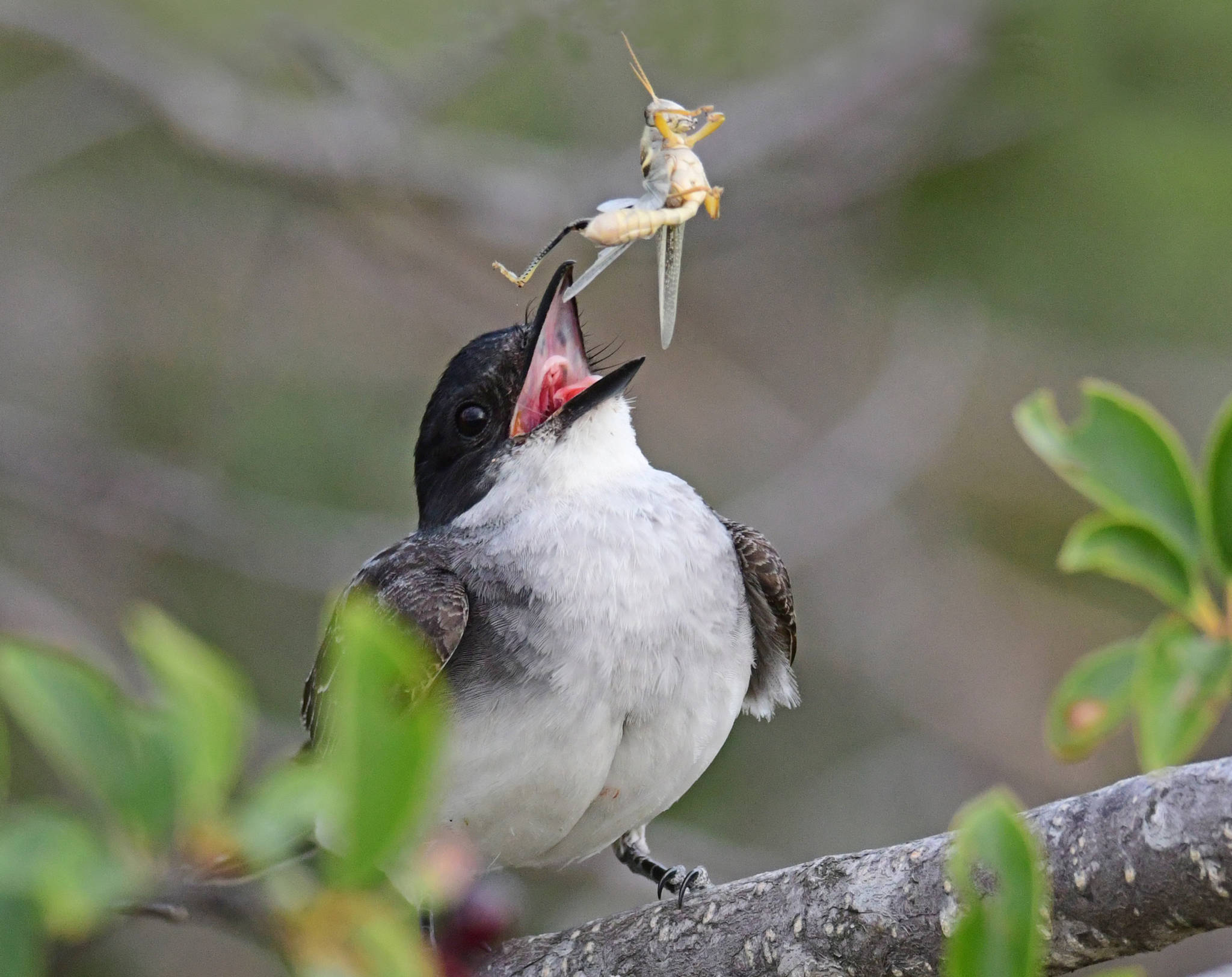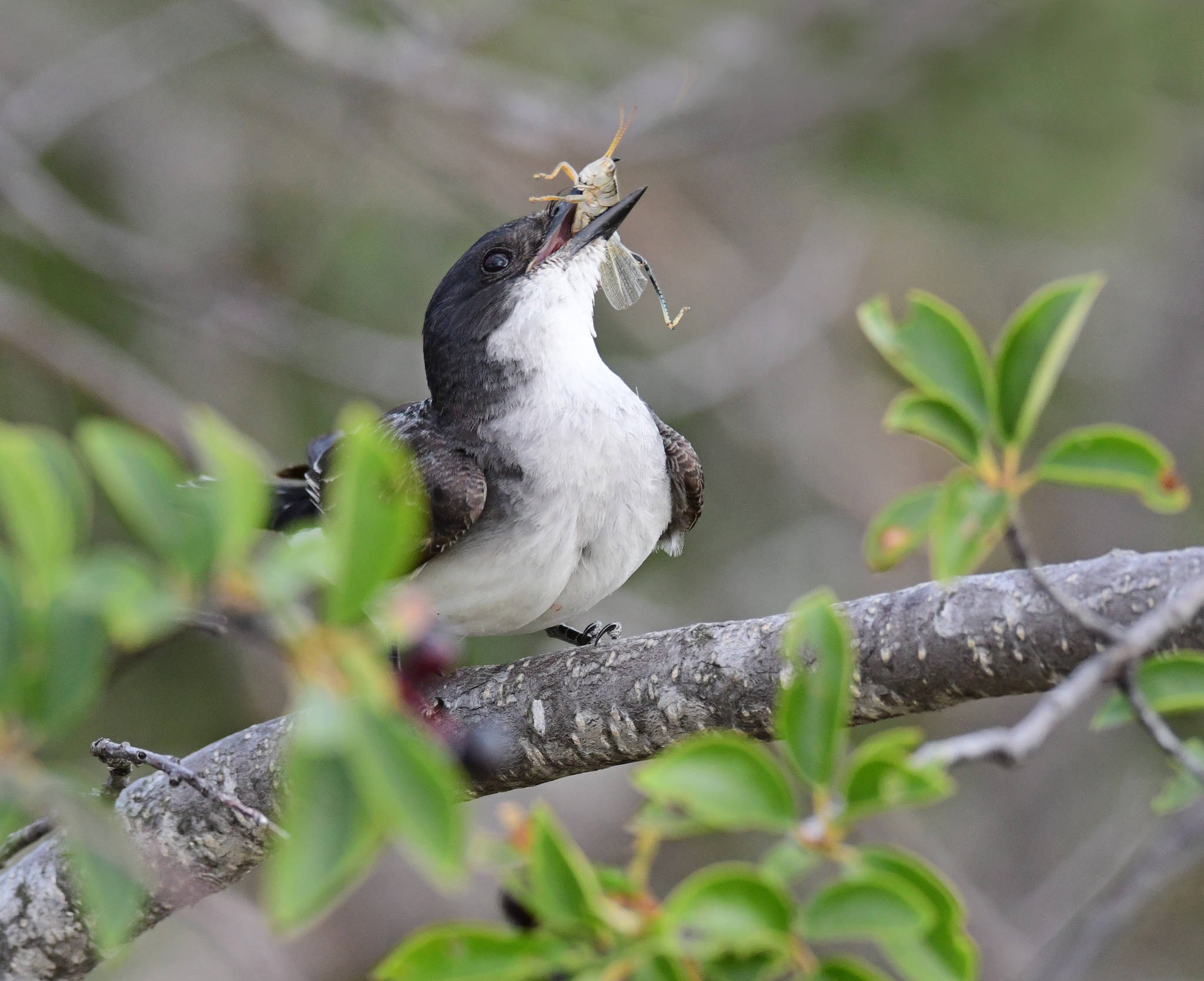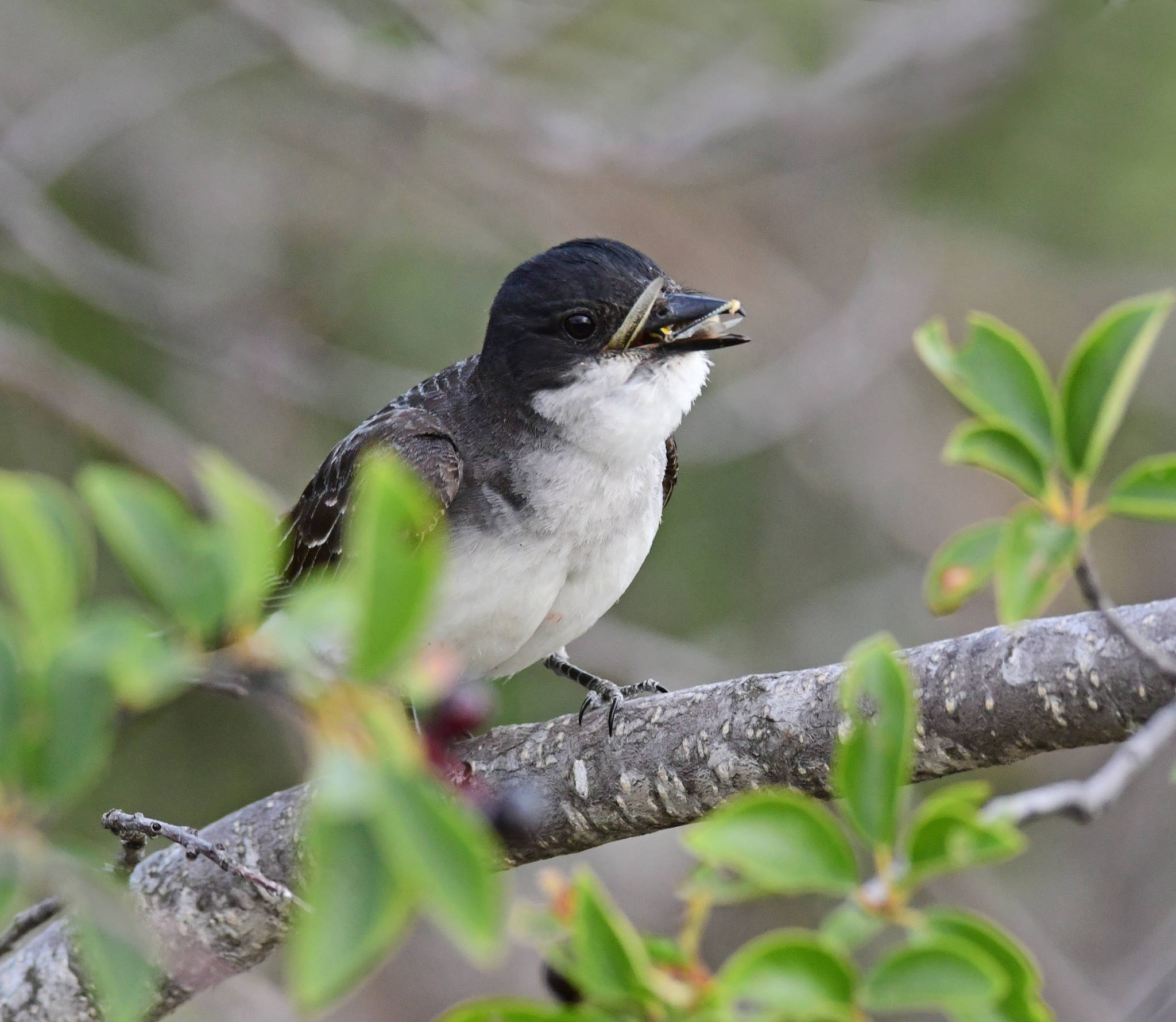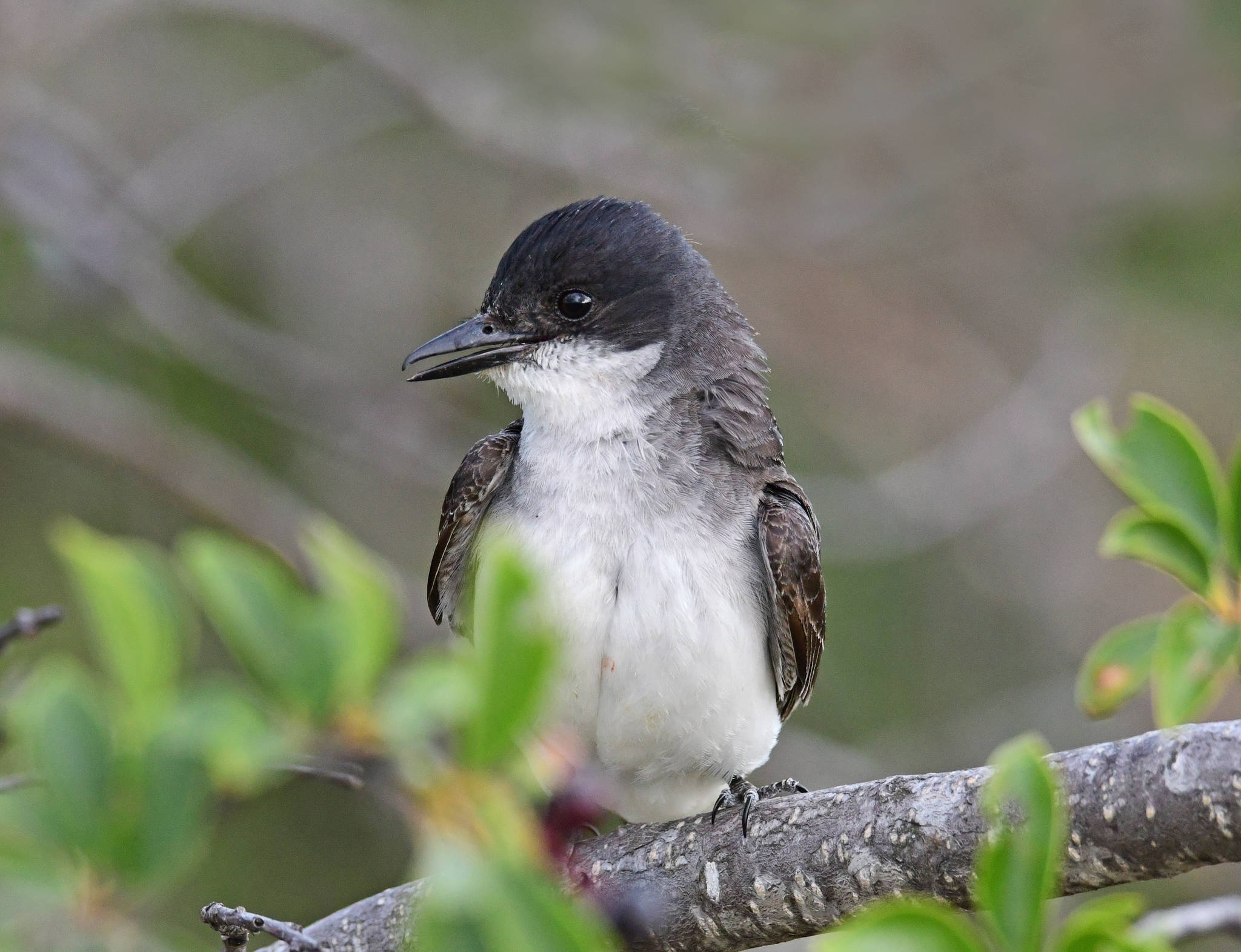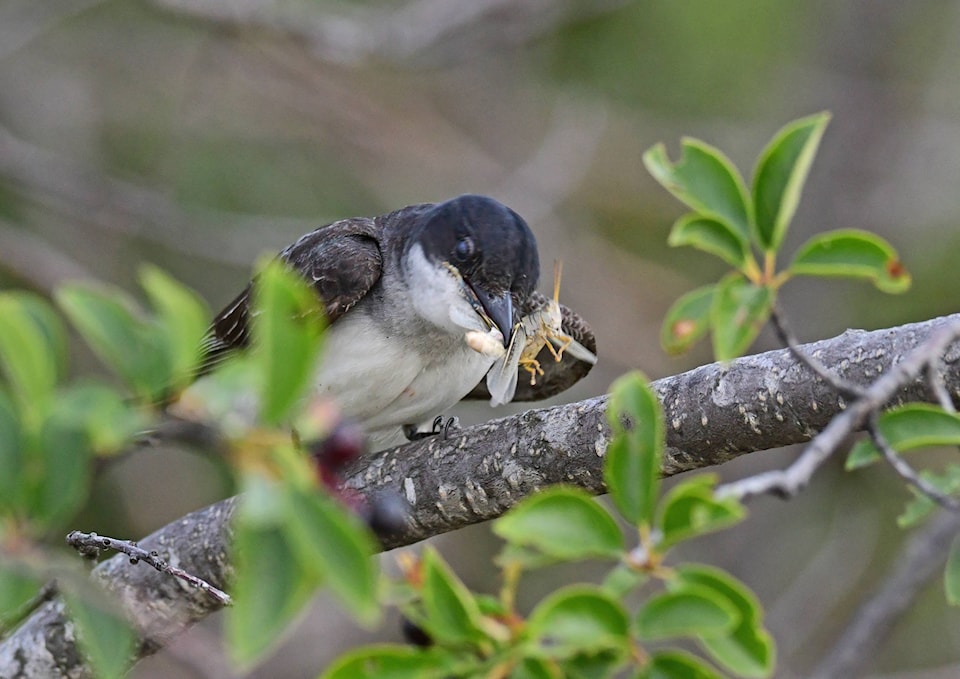Last week, while enjoying an evening walk in the Great Sandhills east of Leader, SK., I had an unexpected encounter with an Eastern Kingbird.
It flew in, with a big juicy two-striped grasshopper (Melanoplus bivitattus) in its beak and landed right beside me.
I watched in awe as it bashed the hapless hopper against the horizontal branch, then tossed it into the air, caught it at a different angle and bashed it again.
It repeated this process at least three times before gobbling it down, then it sat for a few moments in apparent contentment before flying off.
There were a few branches in the way, but experience has taught me it is better to stay still and capture what you can, instead of moving about for that perfect shot and scare the subject away.
Eastern Kingbirds are common songbirds across the Prairie provinces and seem to be everywhere at this time of year. They belong to a group of birds known as the Tyrant Flycatchers, and the Latin name of this species – Tyrannus tyrannus – denotes their pugnacious nature.
Eastern Kingbirds are aggressive to each other, other species (especially crows and other nest predators) and have even been known to attack airplanes. They are not normally aggressive towards humans, but have been known to attack if their nest is threatened.
Readily identifiable by their black plumage, conspicuous white tail tip and distinctive shallow, rowing wingbeat flight pattern, Eastern Kingbirds are commonly seen perched on barbed wire, fenceposts and treetops.
In classic flycatcher style, they wait on a perch for an insect to fly by, then sally out to snatch it mid-air, usually returning to the same perch to eat it (bashing it first if need be). They supplement their insect diet with fruit, especially in late summer. Fruit is eaten during fall migration and makes up most of their diet on the wintering grounds.
It has been my good fortune to have seen several Eastern Kingbird nests over the years, so I plan to write a future column about this aspect of their life cycle and share a few of the many images I’ve taken of the nests and young (luckily, I’ve never been attacked).
Myrna Pearman is the Biologist and Site Services Manager at Ellis Bird Farm. She can be reached at myrna@myrnapearman.com
